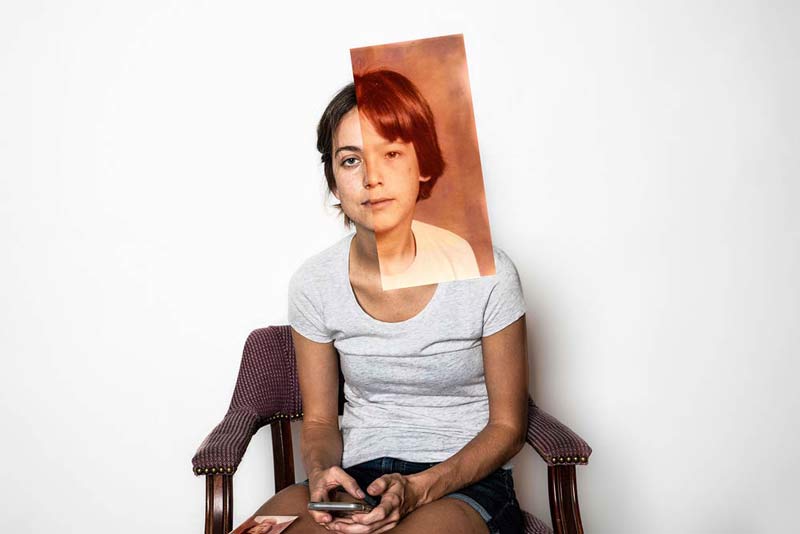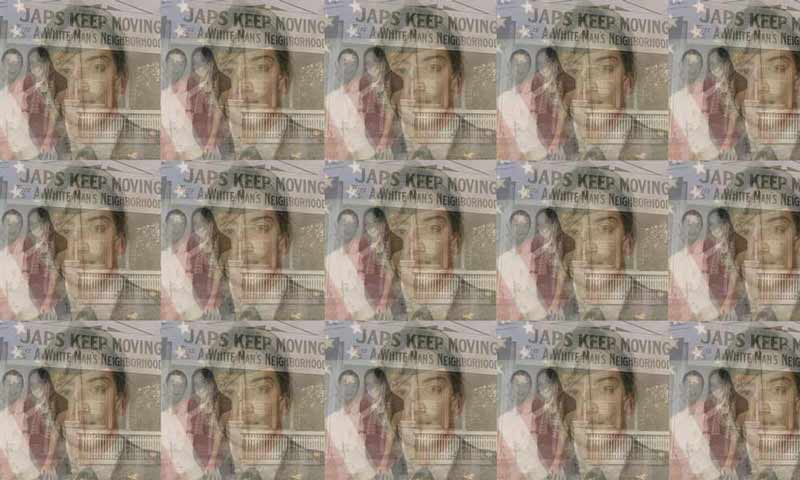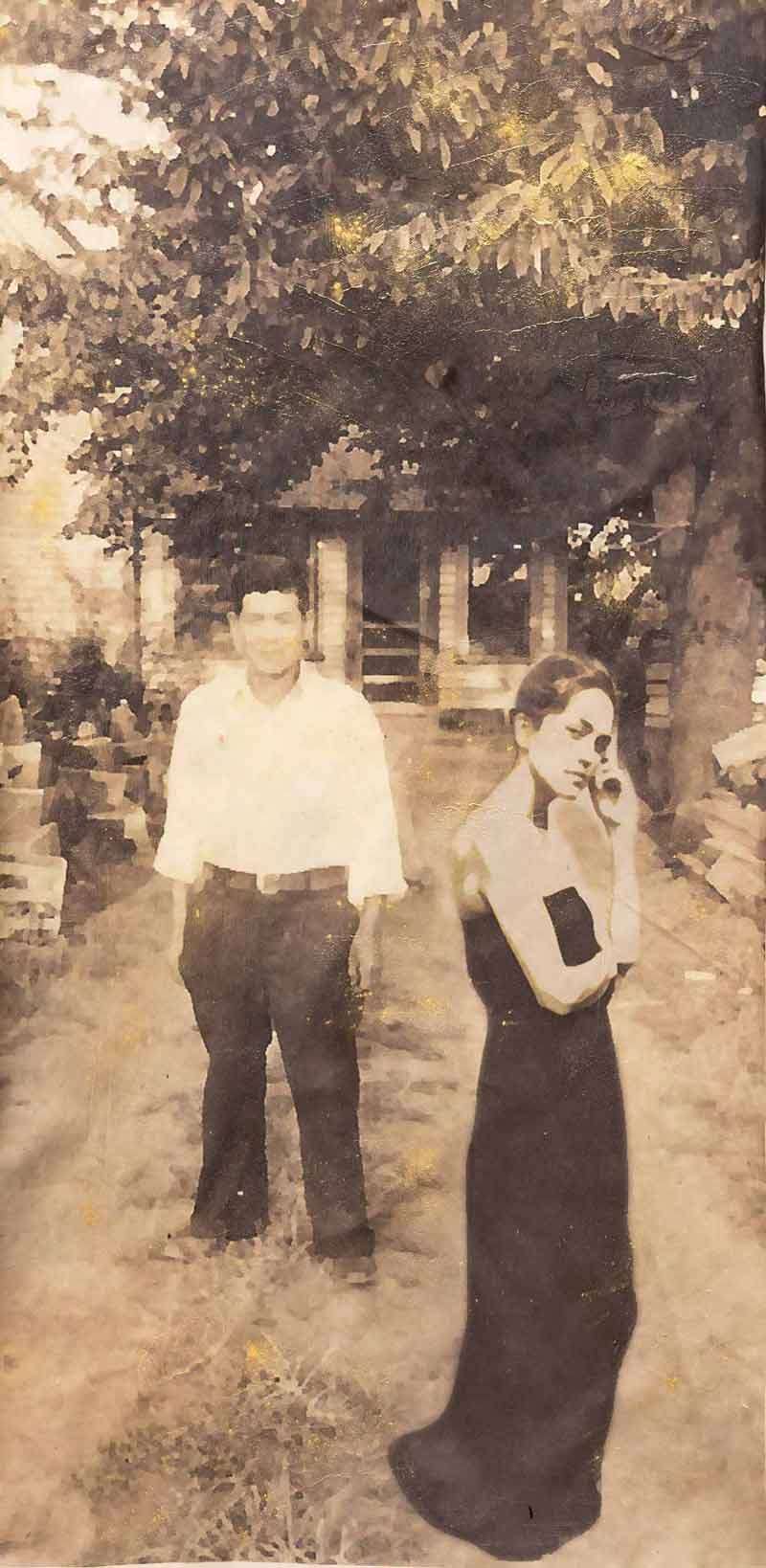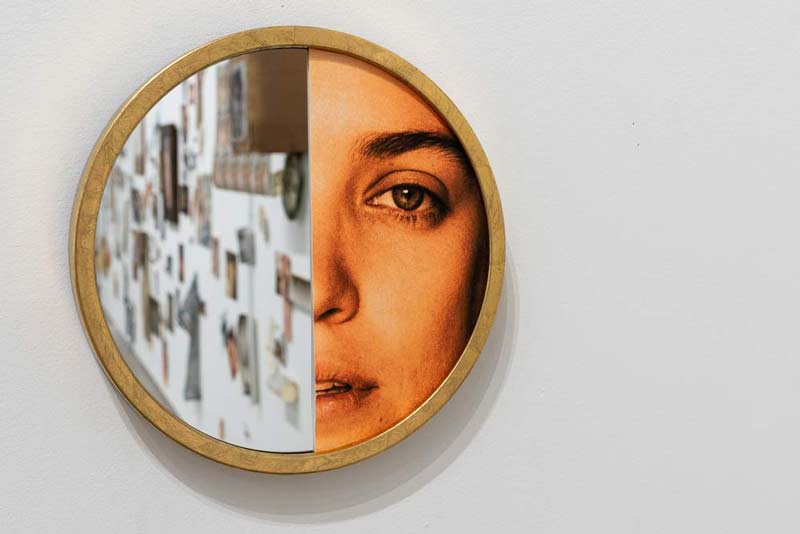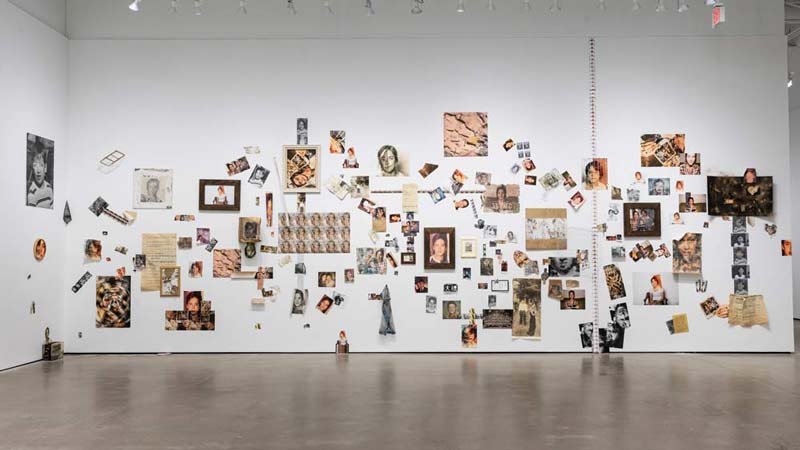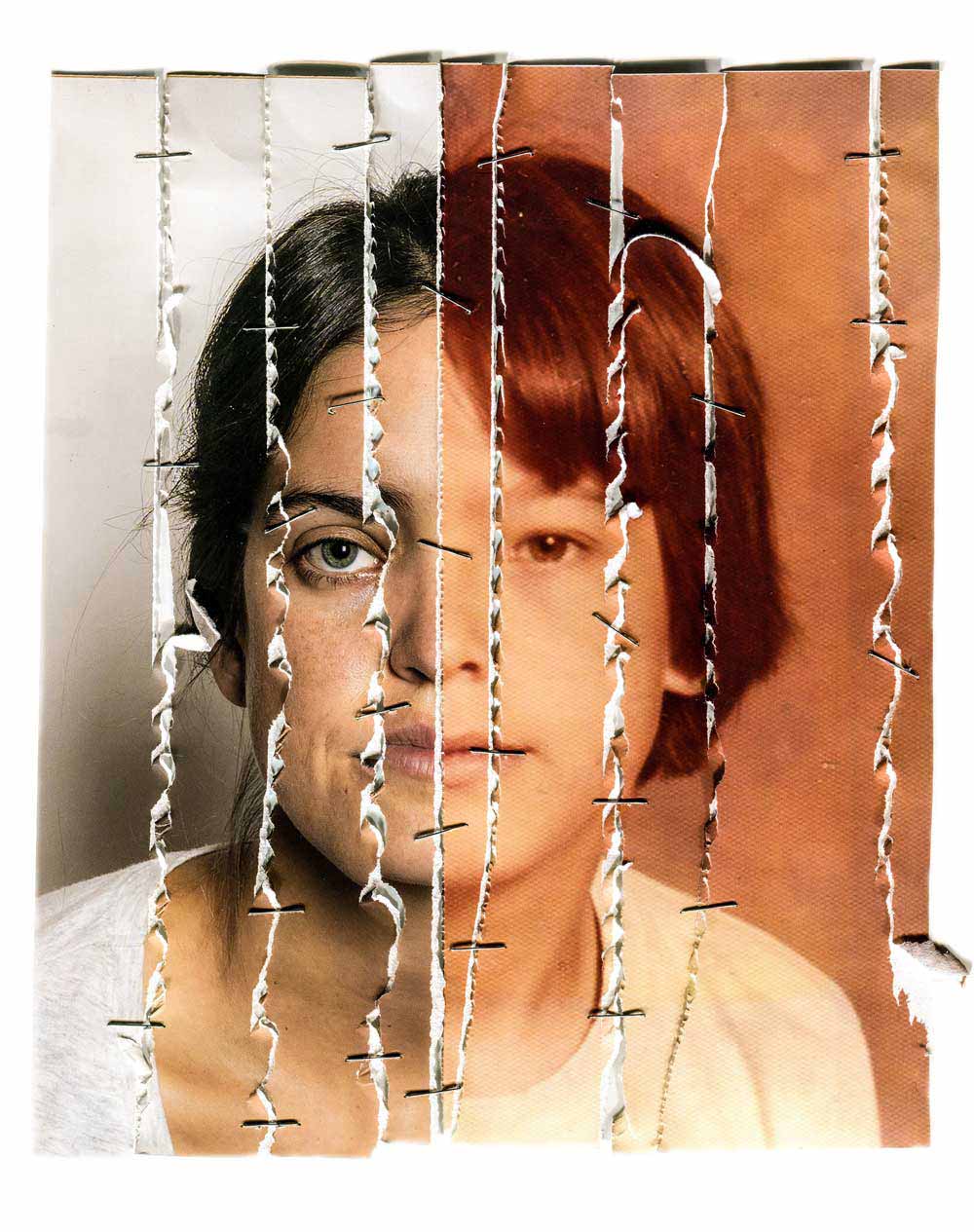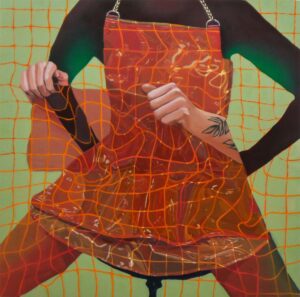Alissa Ohashi uses the word gaman—meaning “to bear the unbearable with dignity and grace” in Japanese—to describe the ancestral trauma in her mixed-media collages. Ohashi’s signature installation, Who We Are, investigates the artist’s Japanese-American heritage through a chaotic commingling of found objects, historical documents, and personal photographs. “To the best of my recollection, I have had this deep, unknown connection to imprisonment and freedom simultaneously,” says Ohashi, whose grandparents were forced into Japanese internment camps during WWII.
Based in Columbus, Ohio, Ohashi uses her collection of personal photographs to create a psychological family photo album full of lived and unlived memories. “My father was not present in my life between the ages of four and 19, and our relationship suffered,” she notes in her artist statement. They’ve since reunited, but her father’s one-time absence sparked in Ohashi the desire for an identity beyond what she could see. To find it, she’d have to go back in time.
Ohashi absorbed herself in “deeper ethnographic and historical research” related to her family’s imprisonment during WWII. As she learned more about her identity, Ohashi reckoned with her painful history by bringing past and present together with manipulated photographs. Her work, barbed with painful past narratives and stitched-up portraiture, belies a tender curiosity about personal wounds, collective trauma, and the eternal quest for liberation.
